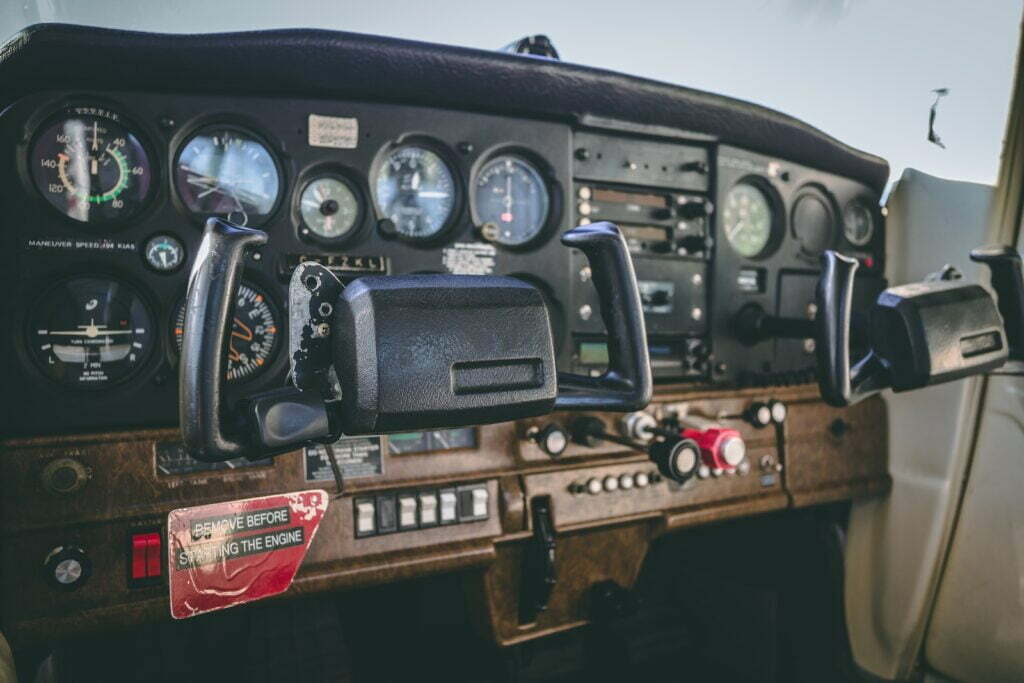
Airbus and Boeing aircraft have distinct differences in terms of their design, systems, and operating procedures.
These differences can be reflected in the corresponding flight simulation software. Here are some of the main differences you might encounter in Airbus and Boeing flight simulators:
- Fly-by-wire: Airbus aircraft use a fly-by-wire system, which means that the pilot inputs are sent to a computer that then adjusts the control surfaces. Boeing aircraft use a more traditional mechanical control system, with hydraulics and cables.
- Cockpit design: The cockpit designs of Airbus and Boeing aircraft are quite different. Airbus cockpits have a more computerized look and feel, with multiple screens and digital interfaces. Boeing cockpits have a more traditional look, with analog gauges and fewer screens.
- Autopilot: The autopilot systems in Airbus and Boeing aircraft differ in their level of automation. Airbus aircraft have a more advanced autopilot system, with more automated functions and modes. Boeing autopilot systems require more input from the pilot.
- Operating philosophy: Airbus and Boeing aircraft have different operating philosophies. Airbus aircraft are designed to be operated using standardized procedures, with the pilot following a predetermined checklist. Boeing aircraft are designed to be operated more flexibly, with the pilot making more decisions based on the situation.
- Control surfaces: Airbus aircraft have a unique design for their control surfaces. The ailerons, elevators, and rudder are all part of a single control surface called the “elevon”. This design allows for more precise control, but can take some getting used to.
In terms of peripherals used to setup Airbus and Boeing flight simulators, there are also several differences that are important to distinguish. Here are some of the differences you might encounter:
- Yokes vs sidesticks: Boeing aircraft typically use a yoke, which is a steering wheel-like device mounted in front of the pilot. Airbus aircraft use a sidestick, which is a joystick mounted on the side of the cockpit. This can affect the type of flight controller that is used in the simulator.
- Throttle quadrant: The throttle quadrant, which controls the engine thrust, is designed differently on Boeing and Airbus aircraft. Boeing has two engine thrust levers mounted in the center console, while Airbus has a single thrust lever located on the side of the cockpit.
- Pedals: The rudder pedals used for controlling the yaw of the aircraft are similar between Boeing and Airbus aircraft. However, the layout and design of the pedals may differ slightly, which can affect the type of flight control pedals used in the simulator.
- Avionics: The avionics systems used in Airbus and Boeing aircraft are quite different, which can affect the types of input devices used in the simulator. For example, Airbus aircraft have a “fly-by-wire” system that uses digital data to control the aircraft’s flight surfaces. This can require more advanced input devices, such as a joystick with more buttons and switches.
- Displays: The cockpit displays in Airbus and Boeing aircraft differ in their size and layout. This can affect the type of monitor or display setup that is used in the simulator.
Overall, the differences in peripherals used in Airbus and Boeing flight simulators are mostly related to the unique design and layout of the aircraft. However, many peripheral devices can be adapted for use with either type of simulator, and most simulators are designed to be highly customizable to suit the needs of the user.










































